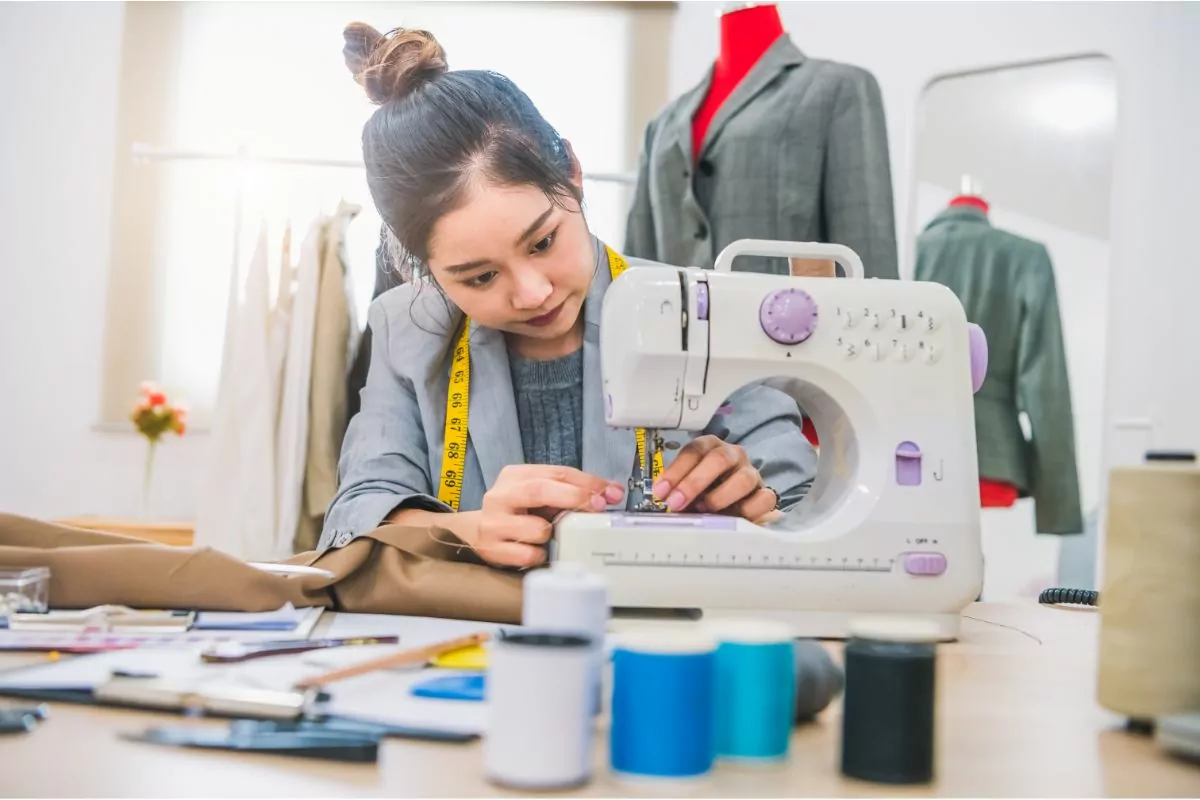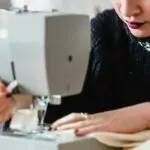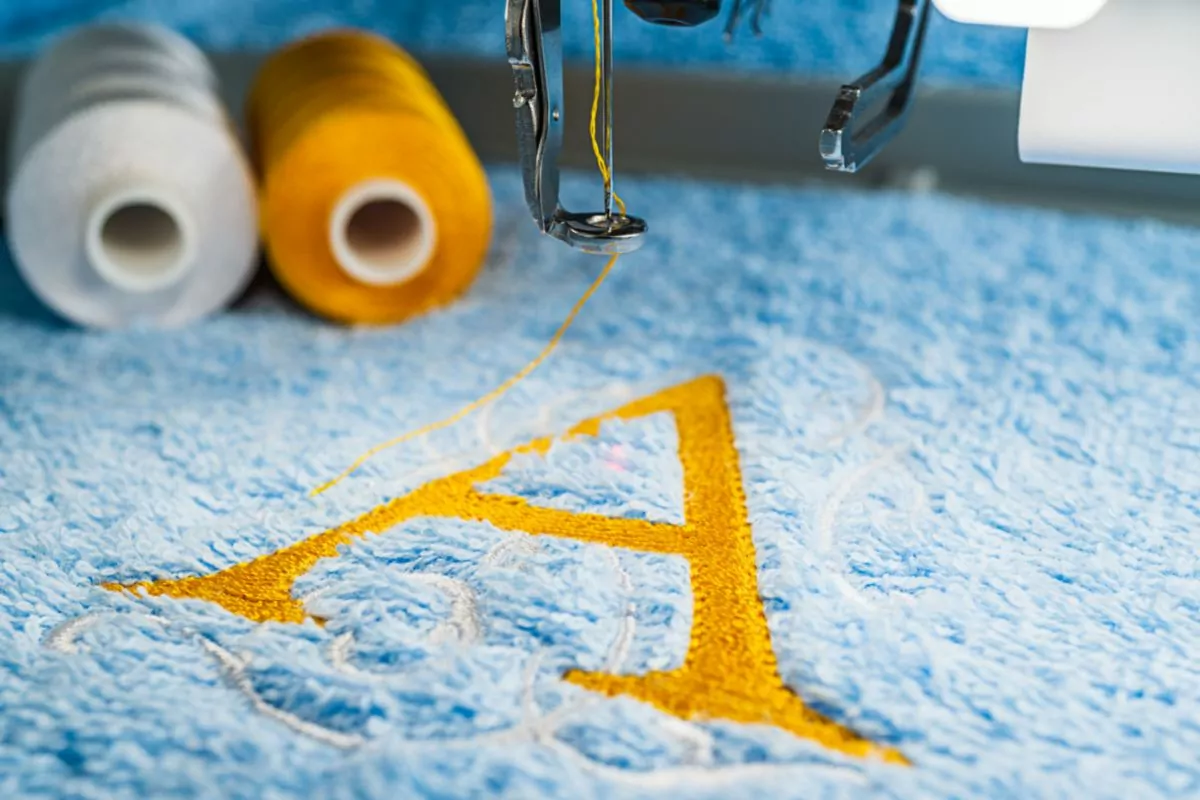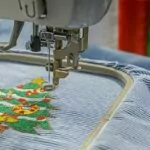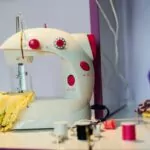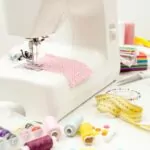Sewing, the art of joining fabrics together with a needle and thread, has been practiced for centuries and is now a popular hobby that can lead you down a path of creativity.

Whether you’re a beginner or an experienced enthusiast, there are a few challenges that can come with sewing, including perfecting certain techniques, working on particular skills, and mastering the perfect stitches.
If you are new to sewing, or considering taking up the hobby for the first time, you may be wondering whether sewing is hard – and we have put together all you need to know to explore the world of sewing and discuss some top tips to make sewing easier for everyone.
What Is Sewing?
We will begin our discussion by exploring what sewing is. Sewing can be considered both an art and a craft, as it involves joining two pieces of fabric together with a needle and thread.
This is done in order to create clothing, accessories, toys, decorations, and more – all of which can be made using different fabrics, colors, textures, and patterns.
Is Sewing Hard?
If you are new to sewing, it can seem like an overwhelming skill to master. However, with the right guidance and practice, it does not have to be hard to do.
It’s important to remember that everyone has different abilities and experiences when it comes to sewing, so don’t worry if you feel like you are taking longer than someone else. With patience and dedication, you can become a proficient sewer.
To help, here are some top tips to help you get started with sewing, and ensure that your projects are a success.
Start With Simple Projects
If you’re new to sewing, starting with complex projects right away can be overwhelming; it is best to begin with simple and straightforward projects that allow you to master the basics.
Simple projects like pillowcases, tote bags, or scarves are excellent choices for beginners. As you gain confidence, you can gradually move on to more intricate designs.
Invest In Quality Tools And Equipment
Having the right tools and equipment can significantly impact your sewing experience. Invest in a good quality sewing machine that suits your needs and budget.
Additionally, make sure you have essential tools such as sharp scissors, measuring tape, pins, and a seam ripper – these all work to make sewing easier.
Practice, Practice, Practice

Sewing is not a skill that you can learn overnight – practice makes perfect! Make sure to set aside some time each week for dedicated practice; this will help you become more familiar with your machine and techniques.
Some of the best ways to practice include creating samples of stitches, making simple projects, and learning new skills.
Follow The Instructions
Following instructions is an important part of sewing, as it will help ensure that your projects turn out the way you expect.
Whether you are working from a pattern or tackling a project on your own, make sure to read through all the details carefully and understand each step before beginning. It’s also a good idea to double-check measurements along the way and take notes when necessary.
Choose The Right Fabric
Selecting the right fabric can make a noticeable difference in your sewing journey. As a beginner, it is best to opt for fabrics that are easier to work with, such as cotton or linen.
These fabrics are stable and tend to be more forgiving. Avoid slippery or stretchy fabrics until you gain more experience, as these tend to be trickier to work with.
Take Your Time With Measurements
Accurate measurements are crucial for sewing success. Whether you’re making garments or home decor items, taking precise measurements ensures a proper fit and professional-looking results.
Use a measuring tape and follow patterns or guides carefully. Rushing through this step can lead to mistakes and frustration later on.
Practice Proper Cutting Techniques
Cutting fabric may seem like a simple task, but it can have a significant impact on the outcome of your sewing project, so taking the time to learn proper cutting techniques is a great investment. Use sharp fabric scissors and cut along straight lines, ensuring clean edges.
If necessary, pin your fabric down before cutting to prevent shifting. Precision in cutting will make sewing more manageable and yield neater finished products.
Master Basic Sewing Techniques
Mastering a few essential sewing techniques can go a long way in improving your sewing skills. Start by learning how to sew straight lines, backstitching, and pivoting corners, and, as you progress, practice techniques like hemming, gathering, and attaching zippers.
There are numerous online tutorials and sewing classes available to help you learn and refine your skills.
Take Breaks And Stay Patient
Sewing requires focus and attention to detail, which can be mentally and physically exhausting. Remember to take breaks during your sewing sessions to prevent burnout, and try to stay patient when working – don’t get discouraged by mistakes or challenges.
Sewing is a skill that improves with practice, and each project offers an opportunity for growth.
Have Fun
One of the most important tips for sewing success is to enjoy the process. Sewing is a creative outlet that can be both fun and rewarding.
Don’t be afraid to experiment, push your boundaries, and express yourself through your projects. Celebrate your successes – no matter how small – and have fun with every step of the journey!
Final Thoughts
Sewing can seem challenging at first, but with practice and dedication, you will be able to master it and really enjoy the activity; just remember to take your time with each step, and don’t forget to have fun with the learning process. With these tips in mind, you can become an expert sewer in no time!
- How To Sew Fabrics Together - June 5, 2023
- How Many Stitches Per Inch? - June 5, 2023
- How Long Does It Take To Sew A Dress? - June 5, 2023


